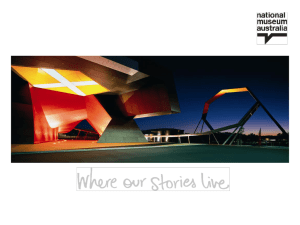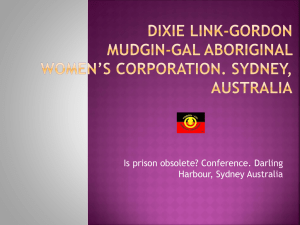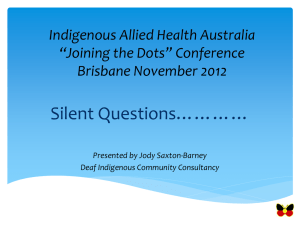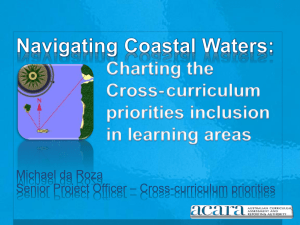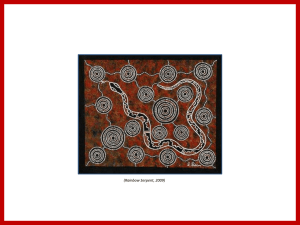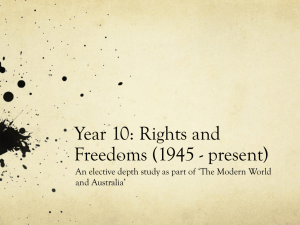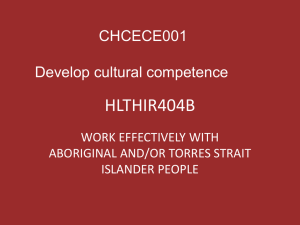The future of nursing and midwifery * Where are we heading?
advertisement
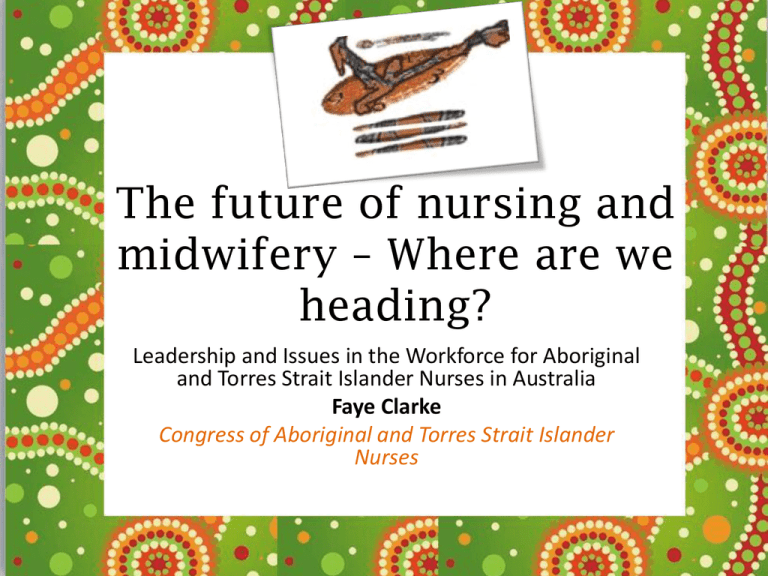
The future of nursing and midwifery – Where are we heading? Leadership and Issues in the Workforce for Aboriginal and Torres Strait Islander Nurses in Australia Faye Clarke Congress of Aboriginal and Torres Strait Islander Nurses My qualifications • Gunditjmara, Wotjobaluk, Ngarrundjeri • Victorian Director for CATSIN • Community Health Nurse, Baarlinjan Medical Clinic • GCTE 2007 • GCDE 2011 Congress of Aboriginal and Torres Strait Islander Nurses Baarlinjan Medical Clinic Aims • To define Australia’s Indigenous people • To describe the role of CATSIN in Australian health care system • To demonstrate the need to increase the recruitment and retention of Aboriginal nurses and leaders • Barriers to developing leaders in nursing in the workforce and in the education setting • Programs designed to assist in Australia • Where are we heading? Aboriginal and Torres Strait Islander people Indigenous Population By State ACT NT Tas NSW SA WA Vic Qld ABS, 2010 Life Expectancy ABS - 2009 Indigenous Non-Indigenous Women 72.9 82.6 Men 67.2 78.7 2009 ABS estimates of life expectancy for children born during 2005-07 Mortality causes: CONGRESS OF ABORIGINAL AND TORRES STRAIT ISLANDER NURSES OUR FORWARD DREAMING The numbers of Aboriginal and Torres Strait Islander peoples in nursing and midwifery reflects the National Aboriginal and Torres Strait Islander population. OUR REASON FOR BEING To increase the recruitment and retention of Aboriginal and Torres Strait Islander peoples in nursing and midwifery. CATSIN’S Major Focus Areas • To develop strategies aimed at increasing the numbers of Aboriginal and Torres Strait Islander peoples into nursing and midwifery, and to retain them in the profession • To ensure non-Indigenous nurses and midwives have education and training in our history, health and culture Number of Aboriginal and Torres Strait Islander Nurses (Registered and Enrolled) Year Total Nurses 2001 2006 791 1135 2011 2212 What is leadership? • • • • • Cultural safety Understanding Commitment and passion Persistence Respect How are leaders made? • Emerging Nurse Leaders • Motivating Factors Role modelling A cause A desire for a better future Indigenous leaders • • • • • • Education and research Support from regulatory authorities Recognising the voice of community Many nations Aboriginal activism is good practice Learning from elders Barriers in the education sector • • • • Successfully completing university Risks to success Issues and difficulties Tackling the barriers: Tjirtamai Barriers in the workforce setting • Identification • Cultural safety • Stresses associated with nursing as a profession • Costs of further education • Horizontal hostility • Workload in Aboriginal health setting • Limited number of Aboriginal nurses creates pressure • Training opportunities • Over-commitment Working collaboratively • Create a critical mass • Join forces with other Indigenous organisations in health • Work with our non-Indigenous colleagues • Improve training opportunities and career paths • Mentoring • Be creative and always inspire Conclusion • Australia’s diverse Indigenous population includes Aboriginal and Torres Strait Islander people • CATSIN’s aim is to increase numbers of Indigenous nurses and midwives • Indigenous people face many barriers in the education setting • Indigenous nurses and midwives also face barriers in the work place that can impact on their development as leaders • Leadership programs are essential to develop our future workforce CATSIN representatives at NZ SPNF References • • • • • • • • • • • • • Aboriginal Australia Map, 2009, http://www.surrender.org.au/wp-content/uploads/2009/09/map_largeweb.jpg Australian Nursing Federation, 2012, Ensuring Quality http://anf.org.au/documents/reports/Issues_Ensuring_quality.pdf Australian Indigenous Health Infonet, (2012) Summary of Australian Indigenous health; http://www.healthinfonet.ecu.edu.au/health-facts/summary; 9/11/12 Australian Institute of Health and Welfare (2009) ‘Numbers of Indigenous GP’s, registered nurses and health students all rising’, www.aihw.gov.au/media-release-detail/?id=6442464820 Australian Institute of Health and Welfare 2012. Nursing and midwifery workforce 2011. National health workforce series no. 2. Cat. no. HWL 48. Canberra: AIHW. Duffield, et al, 2007, Staff satisfaction and retention, and the role of the Nursing Unit Manager, Collegian, Journal of the Royal College or Nursing Australia, 16;1;11-17. Health Workforce Australia, 2012, Health Workforce Insights, Issue 5, http://www.healthworkforceaustralia.com.au/hwinsights/issue5/index.html Hill, J, 2012 http://redroomcompany.org/poet/jonathan-hill/ Six pak productions, Multicultural entertainment, http://www.sixpak.com.au/multi.html The Courier-Mail, 2011 http://www.couriermail.com.au/ipad/performers-mark-coming-of-the-light/storyfn6ck51p-1226085146869 Torres Strait Island map, 2012, www.tsirc.qld.gov.au West, R, 2010, ‘Tjirtamai - ‘To Care for’: A nursing education model designed to increase the number of Aboriginal nurses in a rural and remote Queensland community’ Contemporary Nurse: a Journal for the Australian Nursing Profession, 37: 1, West, R, 2010, ‘Increased numbers of Australian Indigenous nurses would make a significant contribution to ‘closing the gap’ in Indigenous health: What is getting in the way?’ Contemporary Nurse: a Journal for the Australian Nursing Profession, 37; 1, pp 107-108 • Usher, K. (2010) ‘Indigenous higher degree research students making a difference to the Indigenous health agenda’, Contemporary Nurse: a Journal for the Australian nursing profession, Dec. • IT Support: Alana Ryan


